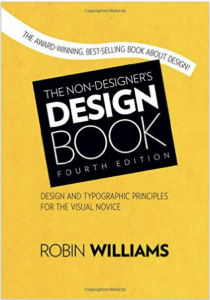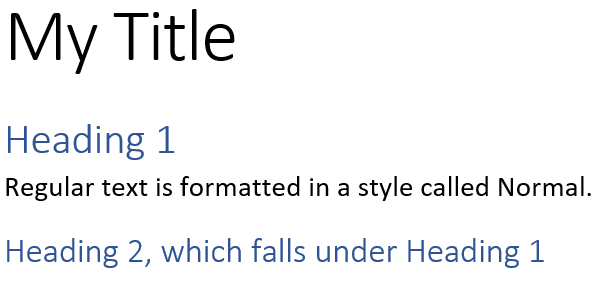Infographics are a powerful way to attract people who are more visually oriented. They also are a great way to re-purpose ideas that you’ve published earlier in a text-heavy format.
I learned some lessons in the process of working with my virtual assistant on the design of my first infographics. She also contributed to this post.
1. Pare your word count
Infographics are short on words. That’s part of how they boost the visual impact of your text. Here are statistics from various sources on the appeal of visual content, which HubSpot shared in “37 Visual Content Marketing Statistics You Should Know in 2016“:
- “Researchers found that colored visuals increase people’s willingness to read a piece of content by 80%.”—for more details, see the Xerox article (PDF) that’s the source of this statistic cited by Hubspot.
- “Content with relevant images gets 94% more views than content without relevant images.”
- “Infographics are Liked and shared on social media 3X more than other any other type of content.”
I created my first two infographics for this blog by dramatically paring the word count of blog posts that I’d written earlier.
2. Get help from a designer, website, or template
I’m lucky to have a virtual assistant (VA) who’s more visually savvy than I am. Kelly, my VA, created my infographics using templates from Canva. I sent her my text and some suggestions about images. Then I turned her loose.
Canva offers pre-designed templates. This is helpful if you struggle to choose colors that complement each other or if you need a boost of creativity in terms of the graphic layout. Within the template, you can change the colors to anything you want. Be careful not to choose colors which either clash with each other or blur together into a bland landscape. The pre-designed templates already have color choices which are complementary, done by a designer. If you wish to change the colors, the Adobe Kuler site gives many complementary color palettes that you can choose from. This will help you identify an attractive, appealing color scheme.
After starting the first infographic, Kelly figured out that we’d need a paid account to customize the dimensions of the graphic. It is hard to choose the exact dimensions before getting started because you don’t know how well your content will fit inside those dimensions. With a paid account, you can customize the dimensions partway through your design process so that it fits your content. I mention this so you’re not surprised if this happens to you with Canva. You can get a free one-month trial to see if Canva is right for you.
Canva isn’t the only tool for creating infographics. Some people use PowerPoint. HubSpot, for example, offers some free infographic templates using Powerpoint. There are other providers of free or low-cost tools. Contently’s “The Pros, Cons, and Costs of the Top 5 DIY Infographic Tools” reviews some alternatives.
If you can hire a professional designer and use tools designed for a big-company budget, I imagine that you can get much nicer results.
3. Think about images for your infographic
As you create your infographic, think about the images that can represent your ideas. Visual appeal plays a bigger role in infographics than in articles or even blog posts. Images are essential. Even if you discuss abstract concepts, you need images to represent them.
Working with Kelly on my first infographic reinforced for me how important the images are. For the second infographic, I inserted screenshots of some stock photo images that I thought might work.
Kelly pointed out that the images used in an infographic have to go together. They need to have a similar look, which might be a bit cartoonish, like the piggy bank pig in my first infographic. These computer-generated images are called vectors by many sources of stock illustrations.
For consistency—and to conform with a template—they may even need to be the same color, as in my second infographic. For this reason, Kelly found it easier to use premium images from Canva in my infographics. This was especially helpful for the second infographic, which required black images, because she was able to change the color of a premium image. Another possibility is to license images from a source that allows you to edit photos, using a paid program such as Adobe PhotoShop, or vectors, using a program such as Adobe Illustrator. If Adobe Illustrator is too expensive for editing vectors, a friend of mine suggested Inkscape, a free program. However, she doesn’t have much experience with the program. My virtual assistant says that, like Illustrator, Inkscape looks like it’s aimed at design professionals, rather than regular folks.
Make sure that you don’t infringe copyright with your image use. Use images from reputable sources. Pay for and credit them, if necessary.
4. You may need to let go of some preferences
I have a bias against light text on dark backgrounds, which is known as reversed type. I don’t like it because it’s typically harder to read, especially if your readers have eyes that are starting to weaken.
Many infographic templates feature blocks of alternating colors, some of which use reversed type. While I managed to avoid reversed type in my two infographics, I lost some color appeal as a result.
5. Check design as well as proofreading
When you review an infographic, you need to look for mistakes in the design or layout, as well as typos and other errors typically targeted in proofreading
For example, line spacing may be off, a line may not extend evenly across the page, or colors may be misplaced. It may help you to find a design-savvy person to check your final product.
6. Remember that JPG files can’t have links
I was keen to insert clickable “share” icons in my first infographic for my blog. Oops, clickable links aren’t possible in the JPG image file format. While they’re possible in a PDF, I can’t display a PDF on my blog.
Again, clickable links are an area where having a big-company budget can probably help you.
YOUR tips?
I’m still finding my way with infographics. I’d like to learn more. Please share your tips.
Image courtesy of seaskylab/freedigitalphotos.net
 Want to improve your design skills? Would you like to be able to look at something and have ideas about how to tweak its design? The Non-Designer’s Design Book: Design and Typographic Principles for the Visual Novice can help.
Want to improve your design skills? Would you like to be able to look at something and have ideas about how to tweak its design? The Non-Designer’s Design Book: Design and Typographic Principles for the Visual Novice can help.



